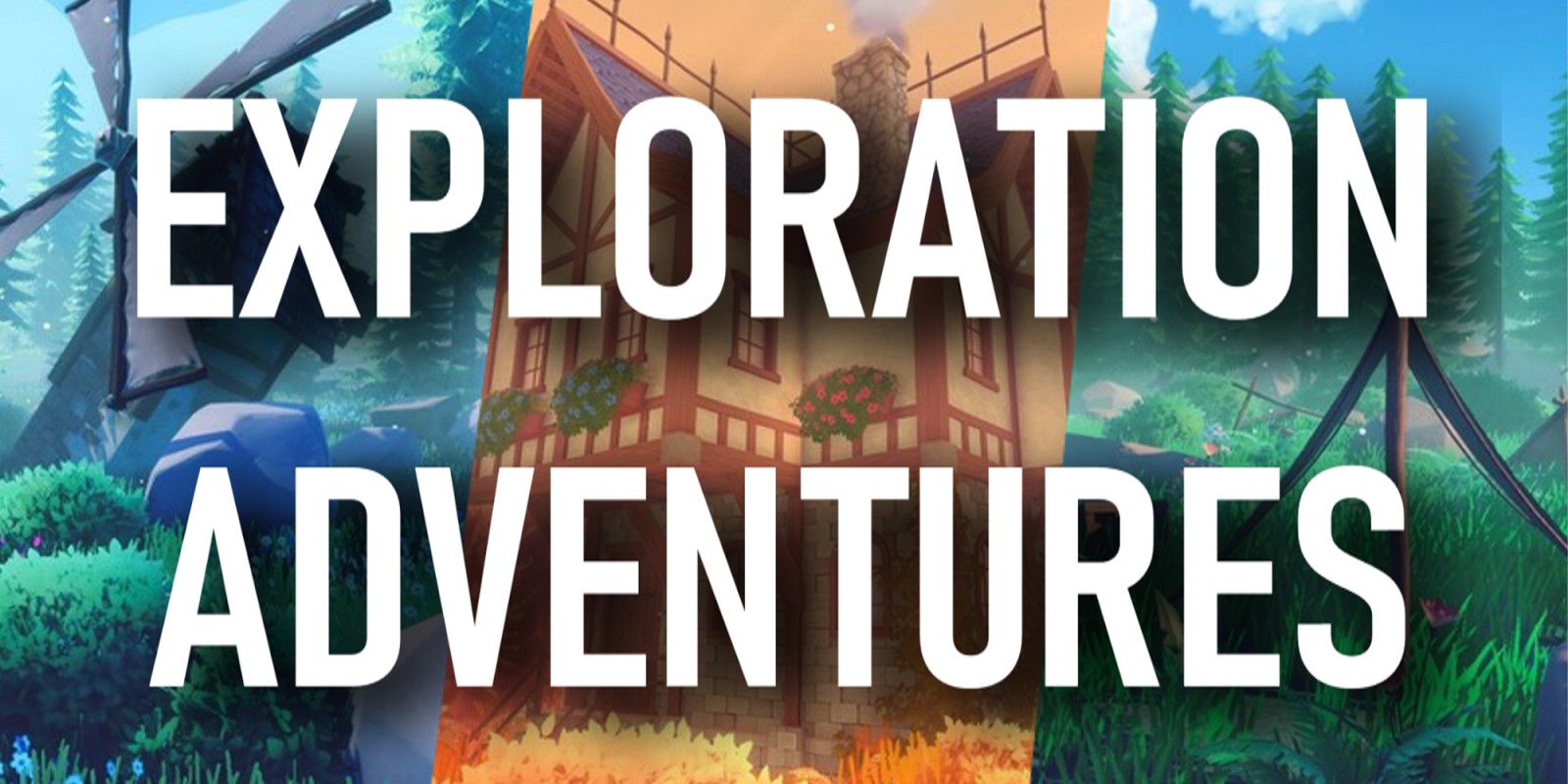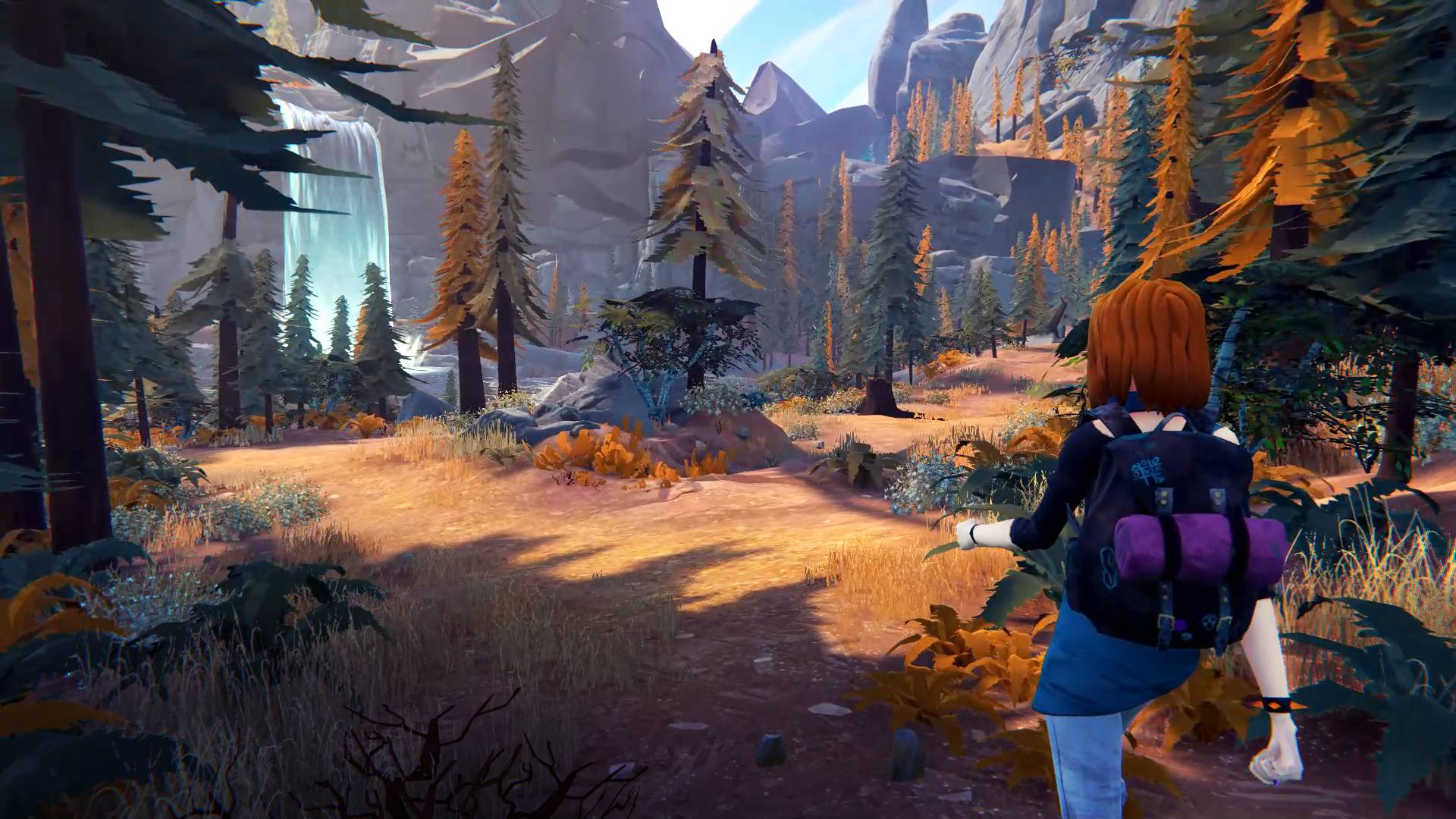
Lost in Wonder: The Enduring Allure of Adventure Exploration Games
For generations, humanity has been drawn to the unknown, to the thrill of discovery and the challenge of navigating uncharted territory. This innate desire finds a potent outlet in adventure exploration games, a genre that allows players to transcend their physical limitations and embark on virtual journeys to breathtaking landscapes, mysterious ruins, and fantastical worlds. These games are more than just digital entertainment; they are interactive stories that ignite the imagination, sharpen problem-solving skills, and offer a profound sense of accomplishment.
The adventure exploration genre is a broad church, encompassing a diverse range of mechanics, narratives, and artistic styles. At its core, however, lies a fundamental promise: the freedom to explore, to uncover secrets, and to shape your own path through a meticulously crafted world. This article delves into the key elements that define adventure exploration games, examining their historical evolution, highlighting influential titles, and exploring the future of this captivating genre.
Defining the Adventure: Exploration at its Heart
What truly distinguishes adventure exploration games from other genres? While elements like combat, puzzle-solving, and storytelling are often present, it is the exploration aspect that takes center stage. These games prioritize player agency, empowering them to chart their own course and uncover the narrative at their own pace. Key characteristics include:
-
Open Worlds or Semi-Open Environments: Adventure exploration games often feature expansive, interconnected environments that invite players to roam freely. These worlds are typically rich with detail, brimming with hidden locations, intriguing characters, and compelling lore.
-
Non-Linear Progression: Unlike linear narratives that dictate a rigid sequence of events, adventure exploration games offer a more flexible approach. Players can often choose which areas to explore, which quests to pursue, and which mysteries to unravel, leading to a unique and personalized experience.
-
Environmental Storytelling: The environment itself becomes a vital tool for conveying narrative. Dilapidated buildings whisper tales of past civilizations, ancient artifacts hint at forgotten rituals, and the very landscape itself can reveal clues about the world’s history and its inhabitants.
-
Discovery and Reward: The thrill of discovery is a central motivator in adventure exploration games. Finding a hidden cave, deciphering an ancient inscription, or uncovering a secret shortcut can be immensely rewarding, both in terms of gameplay benefits and the satisfaction of unraveling the world’s mysteries.
-
Atmosphere and Immersion: A strong sense of atmosphere is crucial to drawing players into the world. Carefully crafted sound design, evocative visuals, and compelling writing all contribute to creating a believable and engaging experience.
A Journey Through Time: The Evolution of Adventure Exploration Games
The roots of adventure exploration games can be traced back to the text-based adventures of the 1970s. Games like Colossal Cave Adventure (1976) and Zork (1977) transported players to fantastical worlds through descriptive prose, challenging them to solve puzzles and navigate treacherous environments using simple text commands. These early titles laid the foundation for the genre, emphasizing exploration, puzzle-solving, and narrative discovery.
The advent of graphical interfaces in the 1980s revolutionized the genre. King’s Quest (1984) introduced players to a vibrant world filled with colorful characters and interactive environments, marking a significant step forward in visual storytelling. Games like Maniac Mansion (1987) and The Secret of Monkey Island (1990) further refined the adventure game formula, blending witty humor, memorable characters, and intricate puzzles.
The rise of 3D graphics in the late 1990s and early 2000s opened up new possibilities for exploration. The Legend of Zelda: Ocarina of Time (1998) redefined the action-adventure genre with its vast, interconnected world and immersive gameplay. Shenmue (1999) pioneered open-world exploration, allowing players to freely roam a detailed Japanese city, interact with its inhabitants, and uncover clues at their own pace.
In recent years, the adventure exploration genre has experienced a resurgence, fueled by advancements in technology and a growing demand for immersive, player-driven experiences. Games like The Elder Scrolls V: Skyrim (2011), The Witcher 3: Wild Hunt (2015), and Red Dead Redemption 2 (2018) have set new standards for open-world design, offering players unparalleled freedom to explore vast, richly detailed environments.
Landmark Titles: Shaping the Genre Landscape
Numerous titles have left an indelible mark on the adventure exploration genre, each contributing unique innovations and shaping the landscape for future generations of developers. Here are a few notable examples:
-
Metroid (1986) and Castlevania: Symphony of the Night (1997): These titles popularized the "Metroidvania" subgenre, characterized by interconnected maps, ability-gated progression, and a focus on exploration and combat. Players gradually unlock new areas and abilities, allowing them to revisit previously inaccessible locations and uncover hidden secrets.
-
The Legend of Zelda: Ocarina of Time (1998): This groundbreaking title revolutionized 3D action-adventure games with its vast, interconnected world, innovative combat system, and memorable characters. It established many of the conventions that define the modern adventure exploration genre.
-
Minecraft (2011): While often categorized as a sandbox game, Minecraft’s emphasis on exploration, resource gathering, and creative building makes it a significant contributor to the genre. Players are dropped into a procedurally generated world and given the freedom to explore, build, and survive in a dynamic and ever-changing environment.
-
Subnautica (2018): This underwater survival adventure game plunges players into a vibrant alien ocean, tasking them with exploring its depths, crafting equipment, and uncovering the secrets of a long-lost civilization. Its unique setting, compelling narrative, and emphasis on resource management make it a standout title in the genre.
-
Outer Wilds (2019): This critically acclaimed indie title offers a unique twist on the exploration genre. Players are trapped in a time loop, forced to explore a miniature solar system and uncover the secrets of an ancient alien race before the sun explodes. Its innovative gameplay mechanics, compelling narrative, and emphasis on scientific curiosity make it a truly unforgettable experience.
-
Elden Ring (2022): FromSoftware took their signature "Souls-like" combat and merged it into a vast, open world ripe for exploration. Elden Ring gives the player a level of freedom to explore and tackle challenges in any order they choose, making it a standout title in the adventure exploration space.
The Future of Adventure Exploration: Pushing the Boundaries
The future of adventure exploration games is bright, with ongoing advancements in technology and a continued desire for immersive, player-driven experiences. Several trends are poised to shape the genre in the years to come:
-
Enhanced Immersion: Virtual reality (VR) and augmented reality (AR) technologies offer the potential to create even more immersive and engaging exploration experiences. Imagine physically traversing the ruins of a forgotten city or interacting with virtual characters in a realistic and believable environment.
-
Procedural Generation: Procedural generation techniques are becoming increasingly sophisticated, allowing developers to create vast, dynamic worlds with minimal manual effort. This could lead to games with virtually limitless replayability, where each playthrough offers a unique and unpredictable experience.
-
Emergent Storytelling: Artificial intelligence (AI) and machine learning are being used to create more dynamic and responsive game worlds. Non-player characters (NPCs) can exhibit more realistic behaviors, react to player actions in meaningful ways, and even generate their own stories and quests.
-
Multiplayer Exploration: Multiplayer adventure exploration games are becoming increasingly popular, allowing players to explore vast worlds together, collaborate on quests, and share their discoveries. This can create a sense of community and shared adventure that is difficult to replicate in single-player games.
-
Greater Focus on Narrative Depth: Players are increasingly seeking games with compelling stories and meaningful characters. Future adventure exploration games will likely place a greater emphasis on narrative depth, offering players more opportunities to connect with the world and its inhabitants on an emotional level.
Adventure exploration games offer a unique and compelling form of entertainment, allowing players to escape the mundane and embark on virtual journeys to breathtaking landscapes and fantastical worlds. As technology continues to evolve and developers push the boundaries of creativity, the future of this genre is bright, promising even more immersive, engaging, and unforgettable experiences for generations to come. The allure of the unknown remains strong, and the call to adventure continues to resonate within us all. So, pick up your controller, strap on your boots, and prepare to get lost in wonder. The world awaits.

